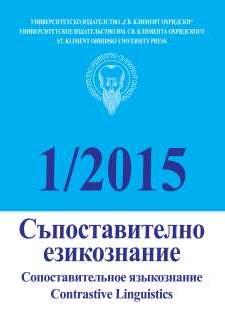
We kindly inform you that, as long as the subject affiliation of our 300.000+ articles is in progress, you might get unsufficient or no results on your third level or second level search. In this case, please broaden your search criteria.

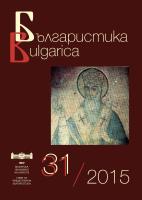
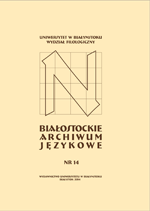
Currently in Russia, due to the change in the political system, there is more and more noticeable impact of the Orthodox Church on the life and language of the Russians. Biblical phraseology begins to permanently enter into the realm of contemporary Russian culture. It became common among the Orthodox Russians to cite the idiomatic expressions and quotations from the Bible. In the modern language of the Orthodox Christians the meanings of idiomatic units coincide with their meanings in the texts of Scripture, which, however, is not always synonymous with the dictionary meaning.
More...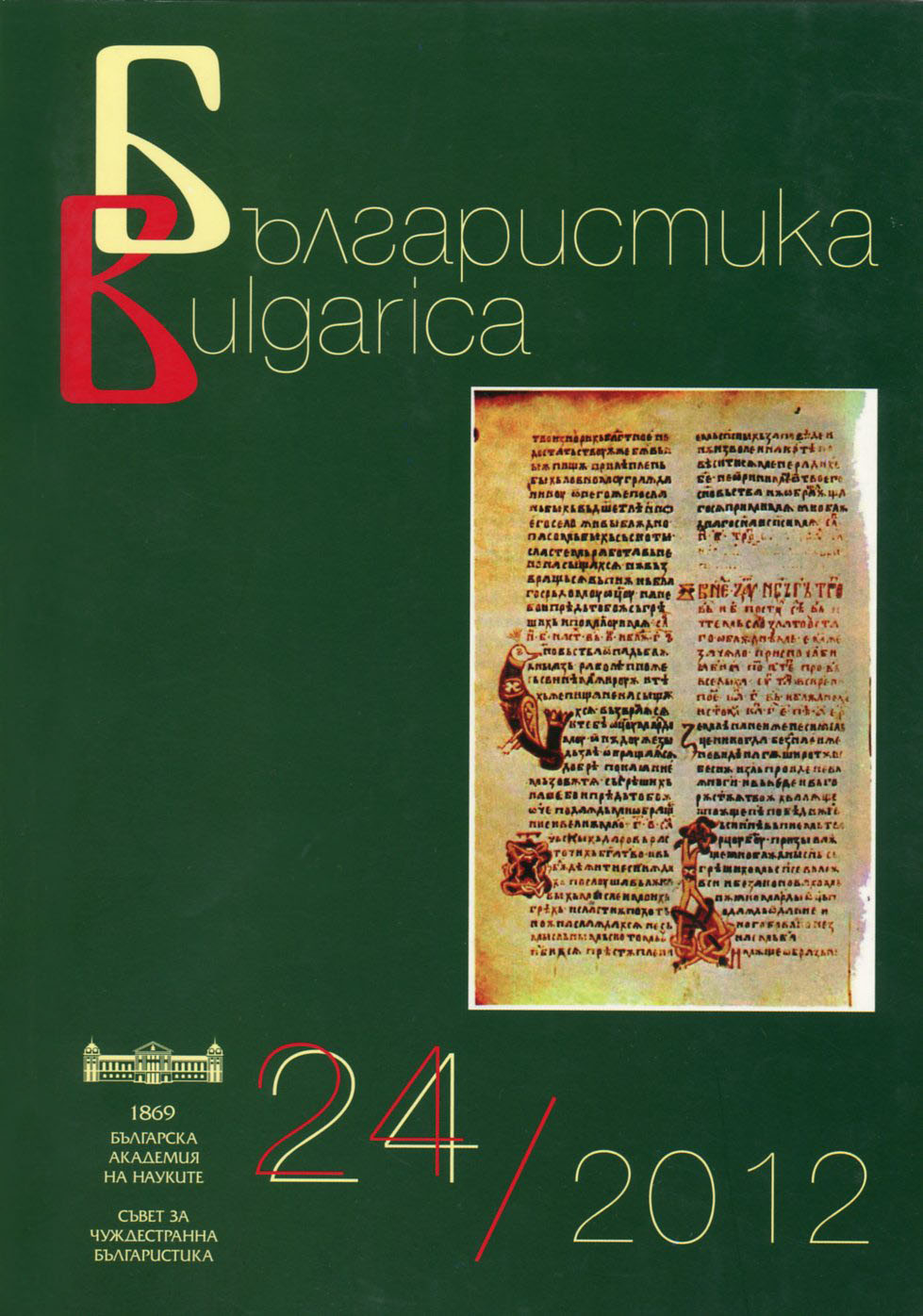
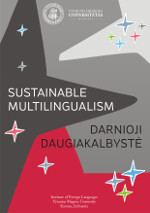
Set within the generative syntactic framework, the present study explores the aspectual projection in Russian and Lithuanian. As is known, aspect is traditionally regarded to be a grammatical category in Russian, whereas there is no unanimous view on Lithuanian aspect and the latter is perceived within the lexical or lexico-grammatical range. Given the fact that both Lithuanian and Russian exhibit the features of languages with the verb merged low on the syntactic tree, while their general morphosyntactic properties are similar in many respects, e.g., rich verb morphology, tense and agreement systems, the verb may be derived by both prefixation and suffixation. Different aspectual properties present an interesting puzzle. The article aims to provide a formal account for this phenomenon. It is first shown that, similarly to Russian, the Lithuanian verb is positioned low, which is reflected in the regular appearance following manner adverbs. However, due to the varying feature strength of the relevant functional projections in each language, verbal movement in each language is realised differently, which consequently affects the morphemic layout as well as has implications for the aspect-tense correlation in each language.
More...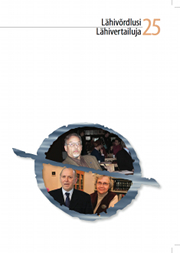
The article described the use of the conditional mood in written exam texts of adult second language learners of Estonian at B1 and B2 level. Be study on which the article is based is part of a larger study, the goal of which is to develop linguistic descriptions to accompany the functional descriptions of B1 and B2 level given in the Common European Framework of Reference for Languages (CEFR 2007). This is to be achieved by identifying the linguistic categories typically used at these levels, describing their frequency of use, analyzing their complexity and accuracy (Housen et al. 2012), determining the connections between the categories and various discourse functions, and specifying descriptors that serve to distinguish between the two levels.As the conditional mood is used far more at B2 level than at B1 level (Kitsnik 2014), it is one of the categories distinguishing B2 from B1 which requires more detailed study. Be results of the study discussed in the article show that at both B1 and B2 level, only the personal voice present tense forms of the conditional mood are used. At B1 level, the conditional is used with eight different verbs,most frequently tahtma ‘to want’ and saama ‘be able to’. At B2 level, the conditional is used with 23 different verbs, most often with tahtma ‘to want’, olema ‘tobe’, võima ‘to be able to’, pidama ‘must’, soovima ‘to wish, desire’, and soovitama‘to recommend’.At B2 level, the conditional is used in more morphological forms than those found at B1 level (the first and third person singular), and it also appears in a range of other constructions (with an object, with a predicate, and in both the main and subordinate clauses of complex sentences) in addition to the B1-level construction of “verb in conditional + infinitive”. As regards discourse functions, the conditional is used at both B1 and B2 level primarily to express politeness. Linguistic accuracy increases at B2 level in the constructions which are used also at B1 level.
More...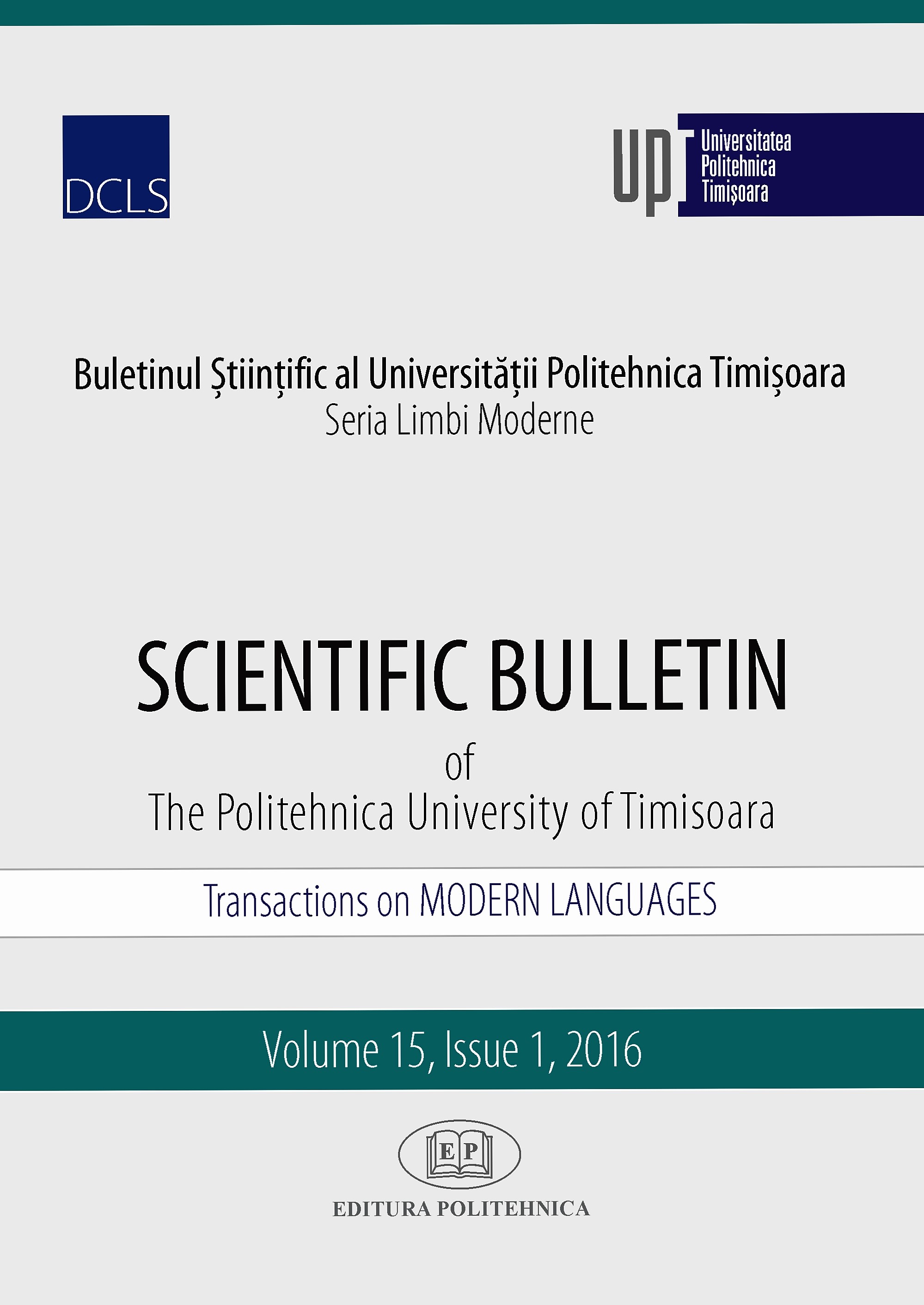
The purpose of the current paper is to display a comparative analysis of the body idioms belonging to two related languages, Russian and Serbian that metaphorically designate human physical and psychical features. A part of the Russian and Serbian idioms contain in their structure a word related to body that function as a symbol. The research of the phraseological material has revealed that phrasemes that have as a head-word a word related to body is one of the most numerous type of phraseological units in both the two Slavic languages.
More...
The development of the lexicon and conceptual system of Estonian has been influenced by the translation of Bible into Estonian. In order to achieve a more precise translation, new words were created either by means of borrowings or derivation using extant word stems. One of the central concepts in Christianity is agape (love), which was translated in early Estonian texts mostly by the word ‘arm’, which was a word with a rather broad meaning. During the Bible translation in the beginning of the 18th century, a new term ‘armastus’ was derived from the same-stem verb ‘armastama’, as an exact counterpart for Greek agape. In the later development of Estonian, the meaning of this term expanded. In the article, the development of Estonian counterparts of agape and the closely related concepts charis and eleos are examined with the comparisons of Latin and German terms, which were languages also used in Estonia during the missionary work and Bible translation.
More...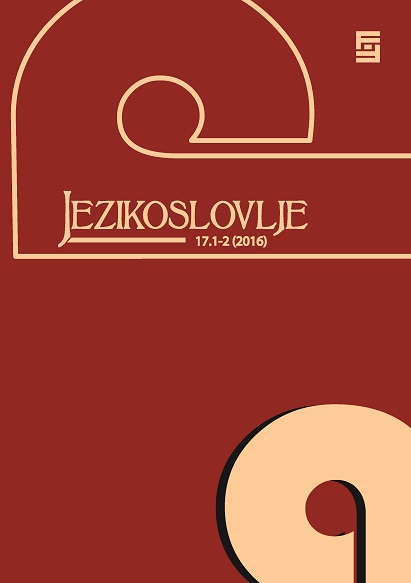
The paper focuses on the analysis of Croatian word combinations consisting of head noun + genitive noun or adjective + noun. The analysis has been carried out on examples of scientific terms used in different fields (mechanical engineering, communicology, etc.) primarily with respect to the norm which prescribes that in standard Croatian (including Croatian scientific terminologies) the word combination consisting of adjective + noun is given preference if such a combination has the same meaning as a combination consisting of head noun + genitive noun. In view of the fact that the scientific terminology contains many word combinations which seem not to observe this rule of the Croatian norm, sources and implications of the rule are considered and the cases in which combinations head noun + genitive noun are not replaced by combinations adjective + noun are formalized. The aim of this study is to investigate the relationship between the two ways of modifying the head noun (with an adjective or a genitive noun), to identify what factors influence the possibility/impossibility to transform one combination into another and to determine the scope of the mentioned rule. By studying synonymous terms of these two combination types used in practice (e.g. osovina kočnice and kočnička osovina, lanac dizalice and dizalični lanac, ležajna nestabilnost and nestabilnost ležaja, vratilo pogona and pogonsko vratilo, medijska odgovornost and odgovornost medija, medijski pravobranitelj and pravobranitelj medija, programski monitoring and monitoring programa), the existence of which also suggests that users are not comfortable with following this rule, the terms which occur in only one of the two combination types (os ležaja, dijelovi ležaja, ploča remena, glava cilindra, ventil motora, glava pile, brzina rezanja, prototip motora, smjer vlakana, bolest bubrega, upala jetre; pogonski kotač, usisni ventil, bubrežni kamenac, jetrene probe) and the terms that occur in both combinations but have different meanings (metalno prevlačenje and prevlačenje metala, medijska pismenost and pismenost medija) conclusions are reached based on which the rule should be amended and modified.
More...
The paper applies the event-related adjectival tests, formed by Roy and Soare (2014), to the Croatian deverbal agentive nouns with the suffix -ač. Instrument, dispositional and episodic nominals were tested. Although instrument nominals are special in a way, some language evidence suggests that splitting agentive nouns in only two classes (episodic and dispositional), proposed by Alexiadou and Schäfer (2010), also makes sense.
More...
Noun phrases in Croatian can differ in the degree of correlation between its constituents. Some constituents form a descriptive free word combinations (velik stol ʽlarge table’, sunčan dan ʽsunny day’, slatka kava ʽsweet coffee’, hladne ruke ʽcold hands’), while others form multiword units which concretize extra-linguistic content that can not be ex-pressed in one word (crna kava ʽblack coffee’, krevet na kat ‘bunk bed’, kreditna kartica ‘credit card’, radno mjesto ‘workplace’). Dependent constituents can be adjectives, which are congruent with a noun (velika soba ‘big room’, radno mjesto ‘working place’), or they can be adverb phrase or prepositional phrase (korak naprijed ‘step ahead’, mnogo ljudi ‘many people’, malo prijatelja ‘a few friends’, četkica za zube ‘toothbrush’, roba s greškom ‘faulty good’). This paper will analyze noun mreža (with reach syntagmatic and semantic potential) and its co-occurrences – they can either form a collocation or a free combination of words. The lexicographic description will be compared with the corpus-data. The analyses will take into consideration a list of computationally obtained collocates (collocation candidates) of a node noun. The frequency and the strength between the words occurring within a particular span can differ. The list of collocates obtained from the corpus will be taken into account and we will examine how it coincides with the existing lexicographic description and with theoretical principles of word combination interpretations in Croatian. The aim of the study is to determine how the corpus analysis can improve the treatment of word-combination entries in lexicographic work.
More...
The author analyzes some typical syntactic properties confirmed in texts written in Čaka-vian and Štokavian literary language between 15th and 18th century. One of these properties is the usage of prepositions od + genitive (e. g. da darži put zakona od mista, pisam od ljubavi, zakon od ljubavi, misto od pribignutja, nebeski ličnik od duš, otče od milosardja) expressing possessivity and other meanings (cause, purpose, property, object). The usage of prepositions od + genitive also appears instead of preposition o + locative (e. g. kada čuje da se od njegova prijatelja dobro govori). It reflects a strong influence of Latin and Italian syntax, and later it became a common literary property of the original works written by Čakavian and Štokavian writers.The author also analyzes noun phrases used to express possessivity with the genitive case of the 3rd person personal pronouns (e. g. nje velikoga milosrdja, njih srca), noun phrases po usta + genitive (e. g. Po usta svetoga Jakova apostola), the appearance of the participle declination and the conversion of the participle to a noun (e. g. govorećijem sveto rožario).
More...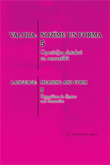
Latvian language is known to exhibit a fairly free word order. Although the base-generated word order of Latvian seems to be Subject-Verb-Object (SVO), due to the overt morphological marking it is possible to generate transitive sentences containing all possible word order vartiations (SVO, SOV, OVS, OSV, VSO and VOS). The present study aimed to confirm the hypothesis that the base-generated word order in Latvian is indeed SVO and test what discourse characteristics might drive the word order variation in this language. An experimental study was conducted surveying native Latvian speakers on their grammaticality judgements of different word orders across a variety of discourse contexts. Upon inspecting the data I propose a set of assumptions that regulate the word order of Latvian.
More...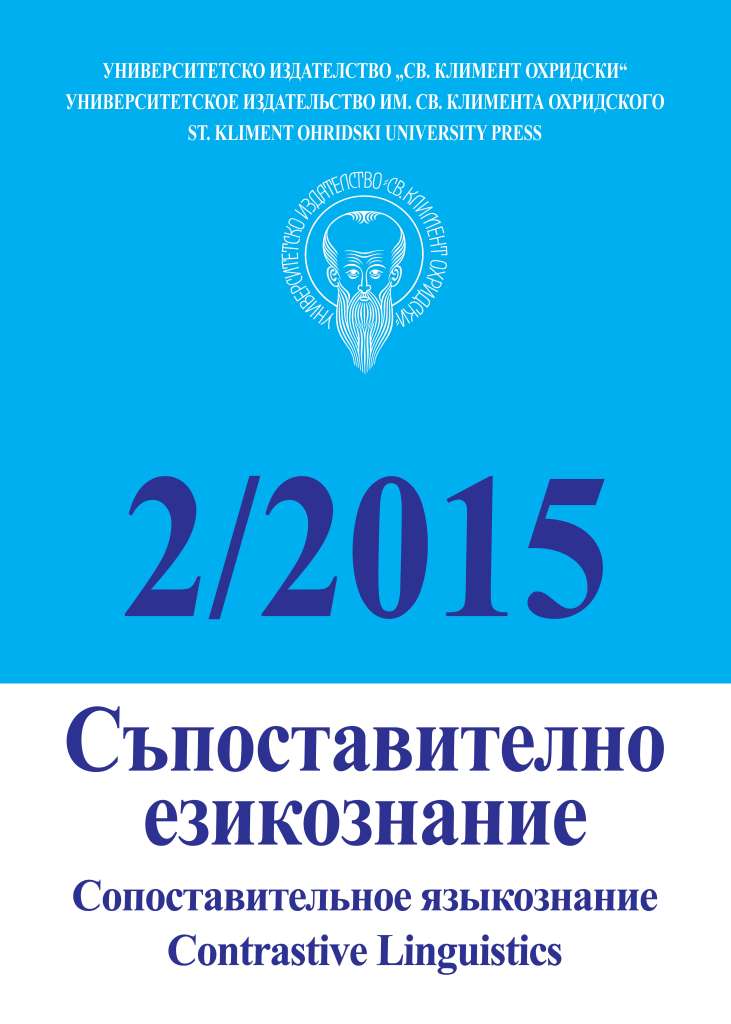
The purpose of this paper is to review how Bulgarian and Polish children acquire demonstrative pronouns and pronominal adverbials as markers of spatial deixis. According to a universal tendency, demonstratives are among the earliest pro-words that children acquire. Previous investigations show that in the acquisition of demonstrative pronouns and pronominal adverbials these are initially used in their non-contrastive functions; besides, the acquisition of demonstratives is preceded by a developmental stage in which transitional deictic systems with various types of non-standard meanings are observed. The analysis of the Bulgarian and Polish data aims at looking for universal tendencies as well as revealing language specific and individual differences.
More...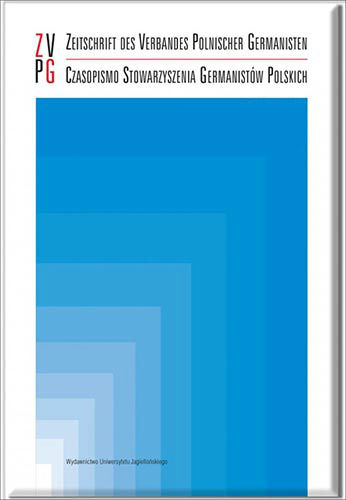
The aim of this article is to show the synchronic section of the maritime phraseology of the 18th century on example of the multilingual dictionary Allgemeines Wörterbuch der Marine by Johann Hinrich Röding. This dictionary contains approximately 5000 lexicographic entries of the seamen’s language. Among them about 100 phrasemes from subject areas such as weather and tides, navigation, shipbuilding, parts of the ship, ship uptake and maintenance, seamen’s everyday life, orders and calls on ships.
More...
The current article is devoted to the derivation of diminutives from the view of Language culture field. The norms of Latvian Standard require that the diminutive goes to declension determined by motivation noun (1st, 2nd, 4th, 5th declensions). There are two very productive diminutive suffixes -iņ- and -īt- that dominate in the derivation of diminutives, and both of them are used in making irregular diminutives. Some irregular diminutives have taken over the regular derivatives, while others may be used for stylistic purposes in order to highlight the connotational information of diminutive. Several irregular diminutives are used as terms. Only irregular diminutives, the use of which is neither semantically nor stylistically conditioned, are considered to be non-standard in the Latvian.
More...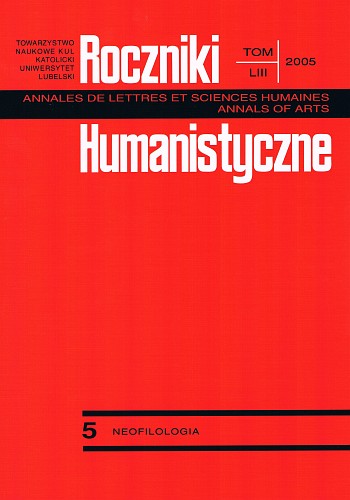
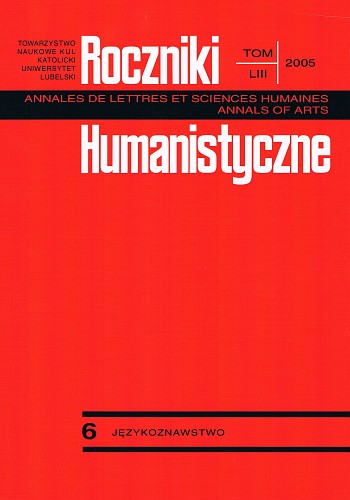
The analysis in this paper is based on the ethnic names of the places situated in the area of the historical Lvov region that constitute ca. 13 per cent of the overall onomastics. Among the ethnic names from the ancient Lvov region the following semantic groups have been distinguished: the names defining inhabitants with respect to their field properties, names indicating the origin of inhabitants from a concrete place, the names most often of a przezwiskowe character, indicating people’s psychical and physical traits, names indicat¬ing the national origin of their inhabitants (the so-called tribal names). The ethnic names from the territory of the historical Lvov region manifest some peculiarities: in reference to the surrounding lands they constitute a relatively large group; the presence of the ending -ynie (eight names, e.g. Nahorynie); the prevalence of names formed by means of the formant -(ań // -yń)ce – 53. Polish names in the toponimic system of the Lvov region result, above all, from an energetic Polish colonisation action conducted mainly from the second half of the 14th c. until the end of the 16th. The above overview showed 89 (61.3%) names bearing Ukrainian traits (Old-Russian or Ukrainian), 20 (13.7%) Polish names and 35 (24.1%) names interpreted as forms with Polish or Ukrainian traits and 1 (0.6%) un¬recognised as to their linguistic genesis. The best definition for the description of the areas where Polish names were frequent in the territory of the historical Lvov region would be their considerable dis¬persion. The number of ethnic names of Ukrainian traits is clearly increasing from the West to the East, see their density in the Złoczów, Żydaczów, and Przemyśl regions. More com¬plete data will be provided by a list of all semantic and formal types.
More...
The article deals with the peculiarities of semantics of motivators in the structure of lexical meanings of polysemantic substantives with the suffix -nik. The analysis reveals hidden meanings in the semantics of derived units. It is concluded that idiomacity, which is a characteristic feature of the substantives under study, is the most important factor of transparency of their semantic paradigm. In the major part of the words, polysemy is formed by the repetitive use of a certain word-formation pattern.
More...
The article deals with affixation as the most productive way to form words that characterize a person in the Tatar language. The analysis of lexicographical material as well as contrastive, historical and etymological data reveals productive and non-productive formants of Turkic origin. The paper identifies the phonetic variants of affixes in the dialects of the Tatar language. The affixes -лы, -сыз, -чыл and -чан are determined to be the most productive in the derived lexemes characterizing a person.
More...